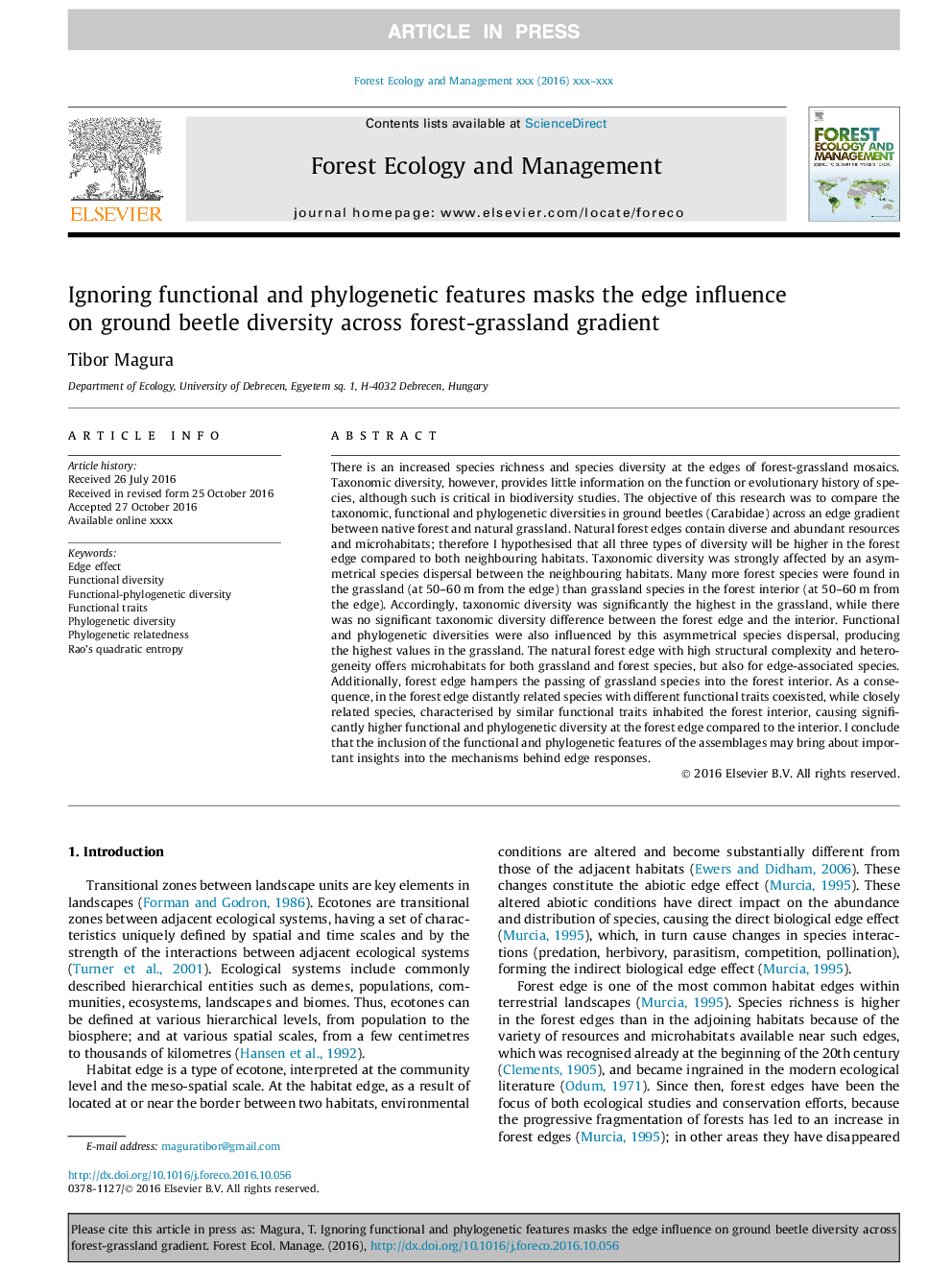| کد مقاله | کد نشریه | سال انتشار | مقاله انگلیسی | نسخه تمام متن |
|---|---|---|---|---|
| 4759639 | 1421374 | 2017 | 7 صفحه PDF | دانلود رایگان |
عنوان انگلیسی مقاله ISI
Ignoring functional and phylogenetic features masks the edge influence on ground beetle diversity across forest-grassland gradient
ترجمه فارسی عنوان
نادیده گرفتن ویژگی های عملکردی و فیزیولوژیکی، تاثیر لبه را بر تنوع سوسک های زمین در گرادیان گاوهای جنگلی
دانلود مقاله + سفارش ترجمه
دانلود مقاله ISI انگلیسی
رایگان برای ایرانیان
کلمات کلیدی
موضوعات مرتبط
علوم زیستی و بیوفناوری
علوم کشاورزی و بیولوژیک
بوم شناسی، تکامل، رفتار و سامانه شناسی
چکیده انگلیسی
There is an increased species richness and species diversity at the edges of forest-grassland mosaics. Taxonomic diversity, however, provides little information on the function or evolutionary history of species, although such is critical in biodiversity studies. The objective of this research was to compare the taxonomic, functional and phylogenetic diversities in ground beetles (Carabidae) across an edge gradient between native forest and natural grassland. Natural forest edges contain diverse and abundant resources and microhabitats; therefore I hypothesised that all three types of diversity will be higher in the forest edge compared to both neighbouring habitats. Taxonomic diversity was strongly affected by an asymmetrical species dispersal between the neighbouring habitats. Many more forest species were found in the grassland (at 50-60Â m from the edge) than grassland species in the forest interior (at 50-60Â m from the edge). Accordingly, taxonomic diversity was significantly the highest in the grassland, while there was no significant taxonomic diversity difference between the forest edge and the interior. Functional and phylogenetic diversities were also influenced by this asymmetrical species dispersal, producing the highest values in the grassland. The natural forest edge with high structural complexity and heterogeneity offers microhabitats for both grassland and forest species, but also for edge-associated species. Additionally, forest edge hampers the passing of grassland species into the forest interior. As a consequence, in the forest edge distantly related species with different functional traits coexisted, while closely related species, characterised by similar functional traits inhabited the forest interior, causing significantly higher functional and phylogenetic diversity at the forest edge compared to the interior. I conclude that the inclusion of the functional and phylogenetic features of the assemblages may bring about important insights into the mechanisms behind edge responses.
ناشر
Database: Elsevier - ScienceDirect (ساینس دایرکت)
Journal: Forest Ecology and Management - Volume 384, 15 January 2017, Pages 371-377
Journal: Forest Ecology and Management - Volume 384, 15 January 2017, Pages 371-377
نویسندگان
Tibor Magura,
